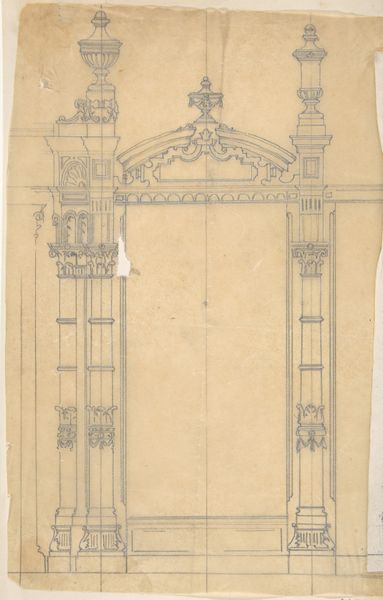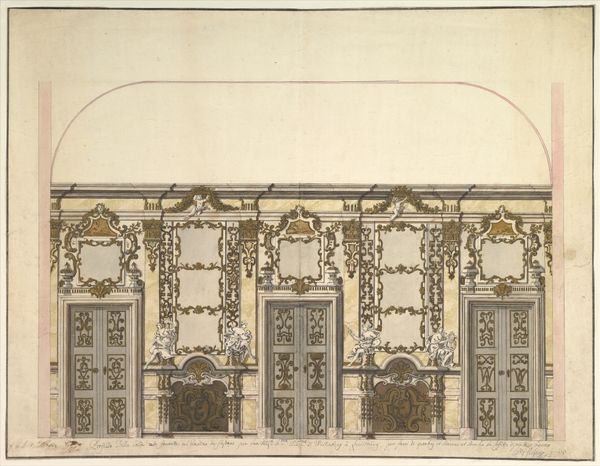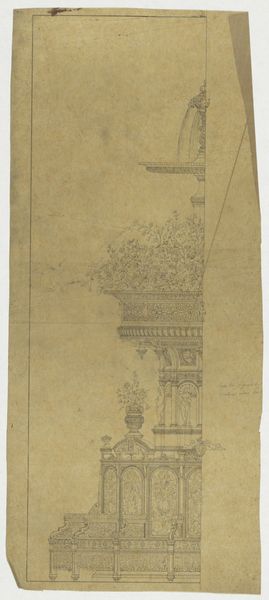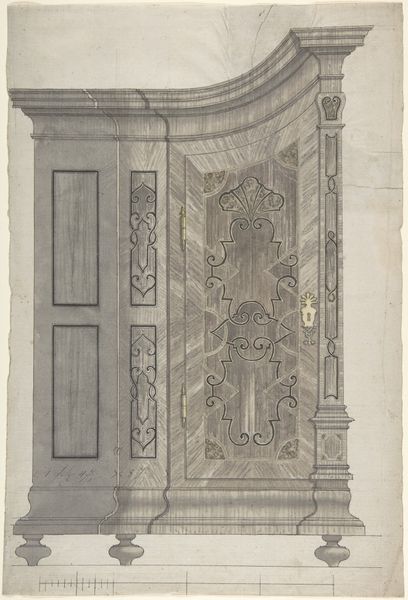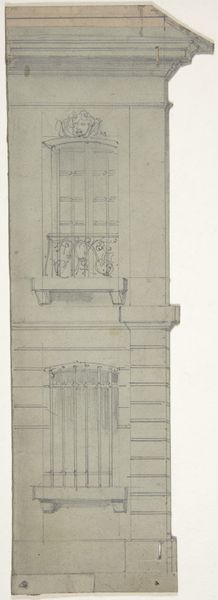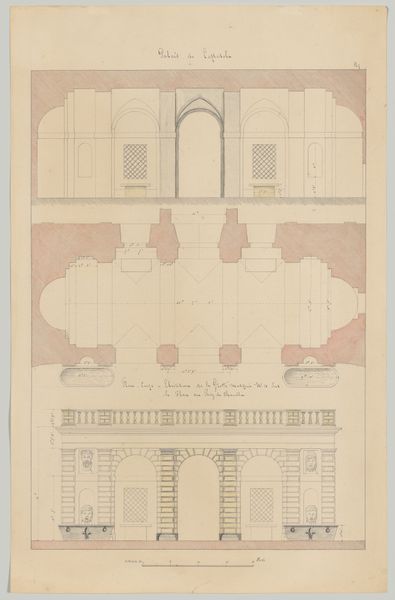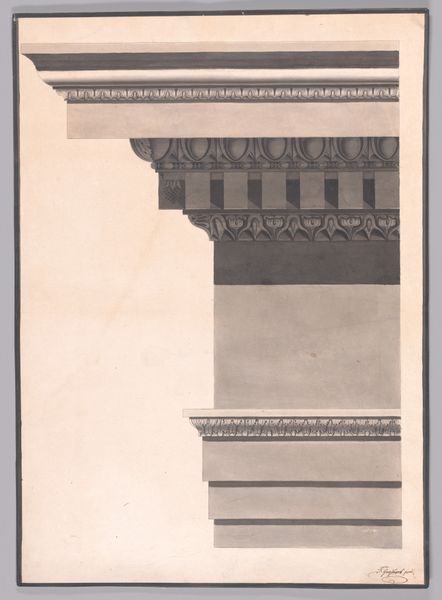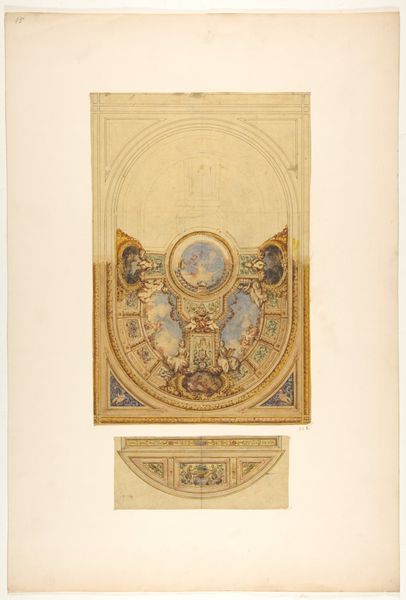
Design for the Garden of a Hotel on Rue des Amandiers, Paris 1750 - 1800
0:00
0:00
Dimensions: 27 5/16 x 18 3/16 in. (69.4 x 46.2 cm)
Copyright: Public Domain
Curator: We are looking at a print titled, "Design for the Garden of a Hotel on Rue des Amandiers, Paris," dating from sometime between 1750 and 1800, currently residing at the Metropolitan Museum of Art. It's unsigned. Editor: Immediately, I notice the overall plan; it seems so orderly, reflecting a deep-seated need to tame nature through careful lines and geometrical forms. The symmetry dominates. Curator: Indeed. The structure imposed by Baroque aesthetics speaks to the social conditions in the late 18th century. A design like this shows the privilege required to devote space and resources to carefully ordered plantings, intricate fountains and stonework. We need to ask: Who built this, and for whom? Editor: And materially, it's interesting to consider the paper itself and the medium used for this drawing. Look closely at the washes and fine lines, so meticulously placed to create depth. There's a controlled lightness about it, not imposing in any way, that draws me in. The ornamental forms on either side of the rectangular sections have a rhythm. Curator: Right. Consider also the economics surrounding architectural drawings such as these, the system of patronage. How might prints like these be made accessible or useful to people within different socio-economic classes? Also, who actually labored on such projects? Did that labor see fair reward? It may reveal something about that era’s values related to power. Editor: Looking closely at the two parterres de broderie, they are not perfect mirrors. The patterning of the green sections shifts enough to activate our view of space. Curator: Let us also reflect that the actual implementation of these printed designs will often have undergone changes depending on the people available for such projects and their labor. A print presents one facet of a complicated creation. Editor: Agreed. Focusing just on form helps us find pathways to wider material questions. It really does enrich our encounter. Curator: Exactly! Bringing together these different viewpoints allows for a complete appreciation.
Comments
No comments
Be the first to comment and join the conversation on the ultimate creative platform.
